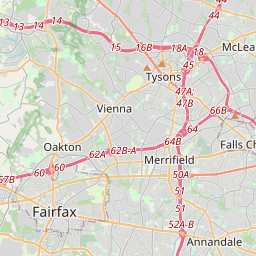Inscription
Securing the Capital
On May 24, 1861, Gen. Winfield Scott ordered eleven regiments of Union troops from Washington, D.C., across the Potomac River, where they captured Arlington and Alexandria.
After their defeat in July at Manassas, Virginia, the Union Army began constructing fortifications to protect the capital city. Fort Albany, Battery Rogers, and Fort Ellsworth near Alexandria anchored the southern end of Washington's defenses. The city became an important Union base of operations.
Military Hospitals
The influx of troops to Alexandria prompted the need for military hospitals. Thousands of sick and wounded Union soldiers were treated in area hospitals throughout the Civil War. The army opened Madison House Hospital, Old General Hospital, Sickel General Hospital, and Slough Barracks General Hospital. It also established a large convalescent camp in Alexandria for soldiers who were discharged from the hospital but were still recovering.
Beginning if March 1863, the federal government began actively recruiting black men for the Union Army. A few months later, the War Department created the Bureau of United States Colored Troops (USCT). USCT regiments fought in battles and engagements from Virginia to Texas. L'Overture General Hospital, designed by the Quartermaster Department, opened in Alexandria in February 1864 for the treatment of black soldiers and civilians.
(sidebar)
The First National Cemeteries
Despite the numerous medical facilities in Alexandria, many soldiers died. The federal government acquired 4 acres adjoining the city cemeteries in 1862 to bury the dead. Initially it was known as Soldiers Cemetery. In 1871, the Quartermaster Department built a Second Empire-style lodge of Seneca sandstone at the entrance. A matching stone wall enclosed the cemetery. Today, Alexandria National Cemetery is the final resting place of about 4,000 individuals, including 280 USCT soldiers.
A simple boulder monument with a bronze plaque, erected in 1922, honors four civilian employees of the U.S. Army Quartermaster Corp. The men drowned attempting to cross the Potomac River on April 24, 1865, while pursuing John Wilkes Booth, President Abraham Lincoln's assassin. Their graves are located near the monument.
On May 24, 1861, Gen. Winfield Scott ordered eleven regiments of Union troops from Washington, D.C., across the Potomac River, where they captured Arlington and Alexandria.
After their defeat in July at Manassas, Virginia, the Union Army began constructing fortifications to protect the capital city. Fort Albany, Battery Rogers, and Fort Ellsworth near Alexandria anchored the southern end of Washington's defenses. The city became an important Union base of operations.
Military Hospitals
The influx of troops to Alexandria prompted the need for military hospitals. Thousands of sick and wounded Union soldiers were treated in area hospitals throughout the Civil War. The army opened Madison House Hospital, Old General Hospital, Sickel General Hospital, and Slough Barracks General Hospital. It also established a large convalescent camp in Alexandria for soldiers who were discharged from the hospital but were still recovering.
Beginning if March 1863, the federal government began actively recruiting black men for the Union Army. A few months later, the War Department created the Bureau of United States Colored Troops (USCT). USCT regiments fought in battles and engagements from Virginia to Texas. L'Overture General Hospital, designed by the Quartermaster Department, opened in Alexandria in February 1864 for the treatment of black soldiers and civilians.
(sidebar)
The First National Cemeteries
Despite the numerous medical facilities in Alexandria, many soldiers died. The federal government acquired 4 acres adjoining the city cemeteries in 1862 to bury the dead. Initially it was known as Soldiers Cemetery. In 1871, the Quartermaster Department built a Second Empire-style lodge of Seneca sandstone at the entrance. A matching stone wall enclosed the cemetery. Today, Alexandria National Cemetery is the final resting place of about 4,000 individuals, including 280 USCT soldiers.
A simple boulder monument with a bronze plaque, erected in 1922, honors four civilian employees of the U.S. Army Quartermaster Corp. The men drowned attempting to cross the Potomac River on April 24, 1865, while pursuing John Wilkes Booth, President Abraham Lincoln's assassin. Their graves are located near the monument.
Details
| HM Number | HM1QFL |
|---|---|
| Tags | |
| Year Placed | 2015 |
| Placed By | U.S. Department of Veterans Affairs, National Cemetery Administration |
| Marker Condition | No reports yet |
| Date Added | Sunday, January 10th, 2016 at 5:01pm PST -08:00 |
Pictures
Locationbig map












| UTM (WGS84 Datum) | 18S E 321271 N 4296776 |
|---|---|
| Decimal Degrees | 38.80163333, -77.05820000 |
| Degrees and Decimal Minutes | N 38° 48.098', W 77° 3.492' |
| Degrees, Minutes and Seconds | 38° 48' 5.8800" N, 77° 3' 29.5200" W |
| Driving Directions | Google Maps |
| Area Code(s) | 202, 703, 571 |
| Closest Postal Address | At or near 1450 Wilkes St, Alexandria VA 22314, US |
| Alternative Maps | Google Maps, MapQuest, Bing Maps, Yahoo Maps, MSR Maps, OpenCycleMap, MyTopo Maps, OpenStreetMap |
Is this marker missing? Are the coordinates wrong? Do you have additional information that you would like to share with us? If so, check in.
Nearby Markersshow on map
Maintenance Issues
- Is this marker part of a series?
- What historical period does the marker represent?
- What historical place does the marker represent?
- What type of marker is it?
- What class is the marker?
- What style is the marker?
- Does the marker have a number?
- This marker needs at least one picture.
- Can this marker be seen from the road?
- Is the marker in the median?

Comments 0 comments